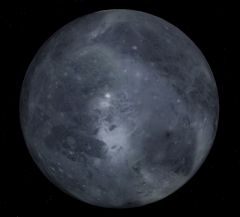Difference between revisions of "Himalia"
Jump to navigation
Jump to search
(Added content.) |
(Added content.) |
||
| Line 4: | Line 4: | ||
!bgcolor="lightsteelblue" colspan="2" align="center" |Himalia | !bgcolor="lightsteelblue" colspan="2" align="center" |Himalia | ||
|- | |- | ||
| − | |colspan="2" align="center"|[[Image:Himalia- | + | |colspan="2" align="center"|[[Image:Himalia-outerplanets060929basezip-Orbiter2006P1.jpg|240px]] |
|- | |- | ||
| − | |colspan="2" align="center"|'''Himalia from | + | |colspan="2" align="center"|'''Himalia from ''outer_planets-060929-base.zip'' in Orbiter 2006P1''' |
|- | |- | ||
!bgcolor="lightsteelblue" colspan="2"|Designation | !bgcolor="lightsteelblue" colspan="2"|Designation | ||
| Line 16: | Line 16: | ||
!bgcolor="lightsteelblue" colspan="2"|Planetary mean orbits | !bgcolor="lightsteelblue" colspan="2"|Planetary mean orbits | ||
|- | |- | ||
| − | |width="30%"|Epoch||align="right" width="50%"| | + | |width="30%"|Epoch||align="right" width="50%"|2006.64779710751 |
|- | |- | ||
| − | |width="30%"|Semimajor axis (a)||align="right" width="50%"| | + | |width="30%"|Semimajor axis (a)||align="right" width="50%"|11394679431.4089 m |
|- | |- | ||
| − | |width="30%"|Eccentricity (e)||align="right" width="30%"|0. | + | |width="30%"|Eccentricity (e)||align="right" width="30%"|0.148020288964713 |
|- | |- | ||
| − | |width="30%"|Inclination (i)||align="right" width="30%"| | + | |width="30%"|Inclination (i)||align="right" width="30%"|30.4865631823591° <br> (0.532090905149446 radian) |
|- | |- | ||
| − | |width="30%"|Longitude of the ascending node (LAN, ☊)||align="right" width="30%"|57. | + | |width="30%"|Longitude of the ascending node (LAN, ☊)||align="right" width="30%"|57.7865255776614° <br> (1.00856513461811 radian) |
|- | |- | ||
| − | |width="30%"|Longitude of periapsis (ϖ)||align="right" width="30%"| | + | |width="30%"|Longitude of periapsis (ϖ)||align="right" width="30%"|405.592890277337° <br> (7.07893135801963 radian) |
|- | |- | ||
| − | |width="30%"|Mean longitude (L)||align="right" width="30%"| | + | |width="30%"|Mean longitude (L)||align="right" width="30%"|711.997576610844° <br> (12.4267019780798 radian) |
|- | |- | ||
!bgcolor="lightsteelblue" colspan="2"|Selected physical parameters | !bgcolor="lightsteelblue" colspan="2"|Selected physical parameters | ||
|- | |- | ||
| − | |width="30%"|Mean radius||align="right" width="30%"| | + | |width="30%"|Mean radius||align="right" width="30%"|93150 m |
|- | |- | ||
| − | |width="30%"|Mass||align="right" width="30%"| | + | |width="30%"|Mass||align="right" width="30%"|9.56×10<sup>18</sup> kg |
|- | |- | ||
!bgcolor="lightsteelblue" colspan="2"|Rotation elements | !bgcolor="lightsteelblue" colspan="2"|Rotation elements | ||
| Line 46: | Line 46: | ||
|width="30%"|LAN||align="right" width="30%"|0 | |width="30%"|LAN||align="right" width="30%"|0 | ||
|- | |- | ||
| − | |width="30%"|Note||align="right" width="30%"|*Elements given are from Himalia.cfg ( | + | |width="30%"|Note||align="right" width="30%"|*Elements given are from Himalia.cfg (outer_planets-060929-base.zip) |
|} | |} | ||
'''Himalia (Jupiter VI)''' is the is the largest irregular [[Natural satellites|stellite]] and the sixth largest satellite of [[Jupiter]]. It was discovered by [[w:Charles Dillon Perrine|Charles Dillon Perrine]] at the [[w:Lick Observatory|Lick Observatory]] on 3 December 1904. Himalia was named after a nymph in Greek mythology who bore three sons by [[w:Zeus|Zeus]]. | '''Himalia (Jupiter VI)''' is the is the largest irregular [[Natural satellites|stellite]] and the sixth largest satellite of [[Jupiter]]. It was discovered by [[w:Charles Dillon Perrine|Charles Dillon Perrine]] at the [[w:Lick Observatory|Lick Observatory]] on 3 December 1904. Himalia was named after a nymph in Greek mythology who bore three sons by [[w:Zeus|Zeus]]. | ||
| Line 56: | Line 56: | ||
|- | |- | ||
!Add-on!!Source!!Version!!Author!!Type!!Release Date!!Compatibility!!Wiki article | !Add-on!!Source!!Version!!Author!!Type!!Release Date!!Compatibility!!Wiki article | ||
| + | |- | ||
| + | |[https://library.avsim.net/esearch.php?DLID=&Name=&FileName=outer_planets-060929-base.zip&Author=&CatID=root The Outer Planets 060929 Base]||AVSIM||||Rolf Keibel<br>Carl Romanik<br>Tony Dunn||Scenery||30 September 2006||Orbiter 2006-P1|| | ||
| + | |||
|- | |- | ||
|[https://www.orbiter-forum.com/resources/2005-with-p1-patch-files.5432/ 2005 (with P1 patch files)]||O-F Resources||050216||martins||Orbiter Download||16 February 2005||Orbiter 2005|| | |[https://www.orbiter-forum.com/resources/2005-with-p1-patch-files.5432/ 2005 (with P1 patch files)]||O-F Resources||050216||martins||Orbiter Download||16 February 2005||Orbiter 2005|| | ||
| Line 66: | Line 69: | ||
== Gallery == | == Gallery == | ||
| − | <gallery widths=" | + | <gallery widths="100" heights="100"> |
Himalia-jupiteriiizip.jpg|<center>Himalia from ''jupiter_iii.zip'' in Orbiter 2002</center> | Himalia-jupiteriiizip.jpg|<center>Himalia from ''jupiter_iii.zip'' in Orbiter 2002</center> | ||
Himalia-outerplanets050125zip-Orbiter2005P1.jpg|<center>Himalia from ''outerplanets-050125zip-Orbiter2005P1</center> | Himalia-outerplanets050125zip-Orbiter2005P1.jpg|<center>Himalia from ''outerplanets-050125zip-Orbiter2005P1</center> | ||
| + | Himalia-outerplanets060929basezip-Orbiter2006P1.jpg|<center>Himalia from ''outer_planets-060929-base.zip'' in Orbiter 2006P1</center> | ||
Himalia - New Horizons.png|<center>Himalia showing changes in phase as seen by the [[w:New Horizons|New Horizons]] spacecraft on 6 March 2007 during the slingshot flyby past [[Jupiter]].</center> | Himalia - New Horizons.png|<center>Himalia showing changes in phase as seen by the [[w:New Horizons|New Horizons]] spacecraft on 6 March 2007 during the slingshot flyby past [[Jupiter]].</center> | ||
Animation of Himalia orbit around Jupiter.gif|<center>Animation of Himalia's orbit over time due to perturbations,<br>from Wikimedia Commons</center> | Animation of Himalia orbit around Jupiter.gif|<center>Animation of Himalia's orbit over time due to perturbations,<br>from Wikimedia Commons</center> | ||
Revision as of 02:37, 16 October 2024
 | This natural satellite related article is a stub. You can help Orbiterwiki by expanding it.
Himalia (Jupiter VI) is the is the largest irregular stellite and the sixth largest satellite of Jupiter. It was discovered by Charles Dillon Perrine at the Lick Observatory on 3 December 1904. Himalia was named after a nymph in Greek mythology who bore three sons by Zeus. Himalia in OrbiterHimalia was introduced to Orbiter with the release of jupiter-iii.zip in October 2002.
See alsoGallery
| ||||||||||||||||||||||||||||||||||||||||||||||||||||||||||||||||||||||||||||||||||||||||||||||||





